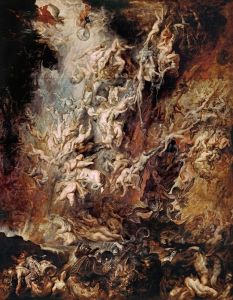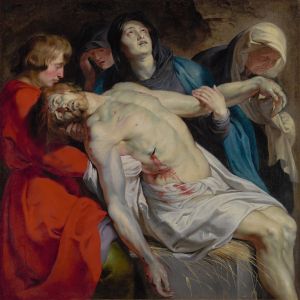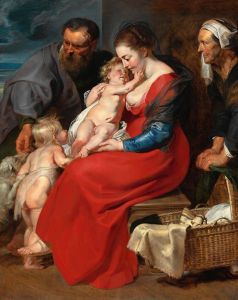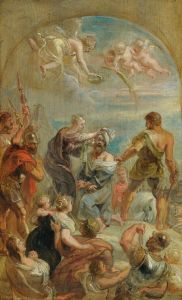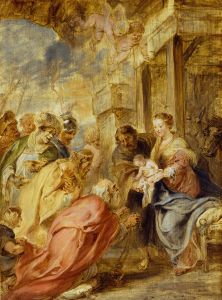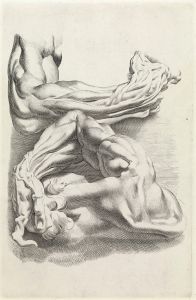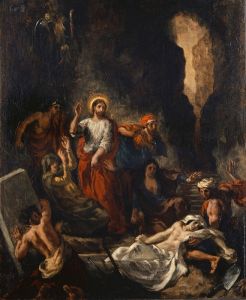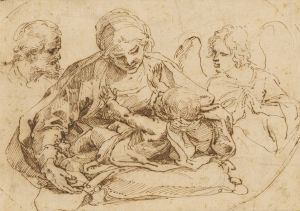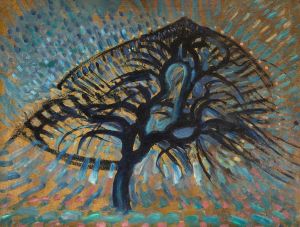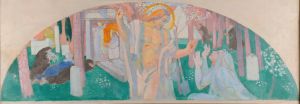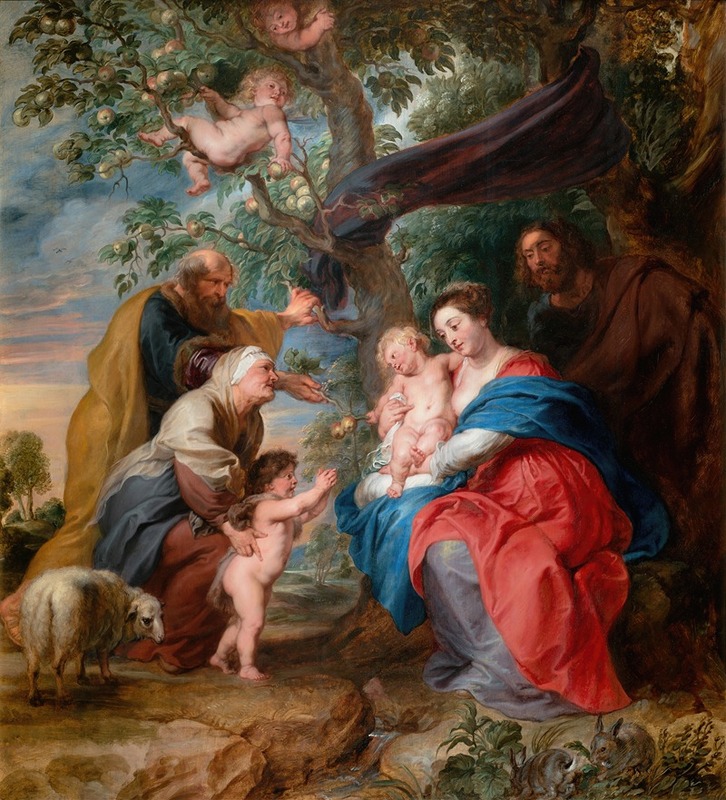
The Holy Family Under An Apple Tree
A hand-painted replica of Peter Paul Rubens’s masterpiece The Holy Family Under An Apple Tree, meticulously crafted by professional artists to capture the true essence of the original. Each piece is created with museum-quality canvas and rare mineral pigments, carefully painted by experienced artists with delicate brushstrokes and rich, layered colors to perfectly recreate the texture of the original artwork. Unlike machine-printed reproductions, this hand-painted version brings the painting to life, infused with the artist’s emotions and skill in every stroke. Whether for personal collection or home decoration, it instantly elevates the artistic atmosphere of any space.
Peter Paul Rubens, a prominent Flemish Baroque painter, is renowned for his dynamic compositions and vibrant use of color. One of his works, "The Holy Family Under An Apple Tree," exemplifies his mastery in religious themes, which were prevalent in his oeuvre. This painting, like many of Rubens' works, reflects his deep understanding of classical art and his ability to infuse it with a sense of movement and emotion.
"The Holy Family Under An Apple Tree" depicts a serene and intimate moment shared by the Virgin Mary, the Christ Child, and Saint Joseph. The setting under an apple tree is symbolic, as apples often represent sin and redemption in Christian iconography, harking back to the story of Adam and Eve. This juxtaposition of the Holy Family with the apple tree may suggest the redemption brought forth by Christ, counteracting the original sin.
Rubens' composition is carefully balanced, with the figures arranged in a harmonious triangular formation, a common compositional technique that guides the viewer's eye through the painting. The Virgin Mary is often portrayed with a gentle and nurturing demeanor, reflecting her role as the mother of Christ. The Christ Child is typically depicted with a sense of innocence and divinity, while Saint Joseph is shown as a protective and supportive figure.
The use of color in "The Holy Family Under An Apple Tree" is characteristic of Rubens' style. He employs a rich palette to bring warmth and life to the scene. The lush greenery of the apple tree and the surrounding landscape adds depth and context, enhancing the overall composition. Rubens' skillful use of light and shadow creates a sense of volume and three-dimensionality, making the figures appear lifelike and tangible.
Rubens was heavily influenced by his travels to Italy, where he studied the works of Renaissance masters such as Michelangelo, Raphael, and Titian. These influences are evident in his treatment of the human form and his ability to convey emotion through gesture and expression. In "The Holy Family Under An Apple Tree," Rubens combines these influences with his own distinct style, resulting in a work that is both classical and innovative.
The painting also reflects Rubens' interest in the natural world, as seen in the detailed rendering of the apple tree and the surrounding landscape. This attention to detail is a hallmark of his work, showcasing his ability to blend realism with idealism.
"The Holy Family Under An Apple Tree" is a testament to Rubens' skill as a painter and his ability to convey complex religious themes with clarity and emotion. It remains an important example of Baroque art, illustrating the period's emphasis on movement, color, and dramatic expression. Through this work, Rubens continues to captivate audiences with his ability to bring biblical stories to life, making them accessible and relatable to viewers across the centuries.






